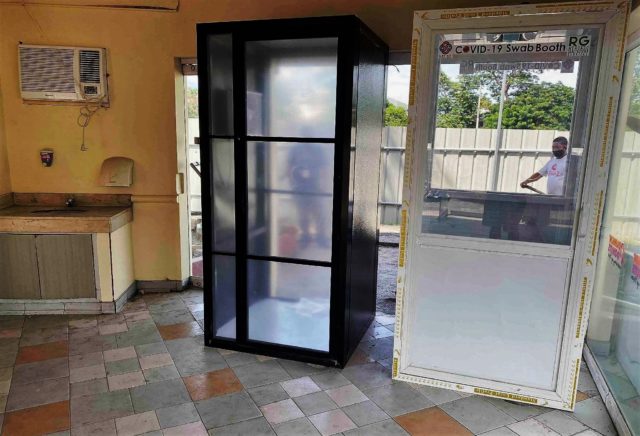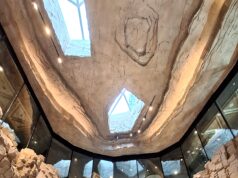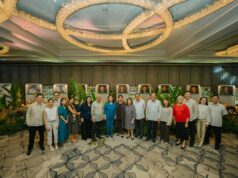The SBMA swabbing center at the Subic Bay Freeport main gate. Contributed photo
SUBIC BAY FREEPORT — The Subic Bay Metropolitan Authority has urged local government units adjacent to the Subic Bay Freeport Zone to join its mass testing program to detect new coronavirus disease infections in the locality.
In a letter sent to LGU executives on Tuesday, April 28, SBMA chair and administrator Wilma T. Eisma said the Subic agency has partnered with the Philippine Red Cross (PRC) to provide Covid-19 mass testing services at minimal cost to residents and stakeholders of SBFZ and its surrounding communities.
The letter was sent to the eight LGUs contiguous to the SBFZ: Olongapo City, Subic, Castillejos, San Marcelino, and San Antonio in Zambales; and Morong, Hermosa, and Dinalupihan in Bataan.
Eisma said the SBMA-PRC mass testing program will be open to the public, although priority will be given to suspected and probable Covid-19 cases, as well as frontliners in the SBFZ, SBMA employees, and SBFZ residents.
“In this regard, SBMA is offering to partner with (LGUs) for the Covid-19 mass testing of (their) constituents at a cost of P3,500 per test, inclusive of test kits,” Eisma said. Similar polymerase chain reaction (PCR) tests cost from P8,000 to P9,000 when administered at private hospitals in Manila, it was learned.
Eisma said that for this project, the SBMA has retrofitted two buildings at the Subic Bay Freeport main gate to house at least six telephone booth-type swabbing centers where trained health workers will take swab samples from patients. The collected samples will then be validated and taken to the PRC Molecular Laboratory at Subic’s Naval Magazine Area for testing.
The Red Cross testing facility in the Freeport will be equipped with an automated RNA extraction machine that can run 90 samples per hour, and two PCR machines that can each process 1,000 samples a day for a daily turnout of 2,000 tests.
The mass testing project here is the brainchild of Senator Richard Gordon, who is chairman of Philippine Red Cross. Gordon had designated Subic and the nearby Clark Freeport as PRC Covid-19 testing centers for the Central Luzon region.
Gordon had earlier stressed the exclusive use of the PCR testing method because it is more reliable and accurate than the rapid testing method, which still requires a confirmatory test.
In her letter to LGUs, Eisma said that while the PRC will require an advance of P5 million that would cover an initial 1,420 tests, the LGUs can recoup their expenses, as the same will be covered by the Philippine Health Insurance Corp. in line with PhilHealth Circular No. 2020-10.
She added that the SBMA is willing to explore a scheme whereby LGUs could advance the cost required by PRC from the 2% LGU shares to be collected by the SBMA from taxes paid by Subic Freeport locators. The SBMA has been releasing LGU shares twice a year since 2011, with an average release of P116.68 million each semester for the eight communities adjacent to the Subic Bay Freeport.
Eisma said the SBMA won’t impose any fee on top of the P3,500 cost that the Red Cross will charge to defray the costs of equipment, manpower and supplies needed for the mass testing program.
She added that at the moment, applications for Covid-19 mass testing will be screened through the Red Cross hotline 1158, although the SBMA may put up a similar hotline to help hasten processing.
Under Republic Act 11469, or the Bayanihan to Heal As One Act, which declared a state of national emergency in face of the Covid-19 pandemic, the Philippine Red Cross was identified as the primary humanitarian agency that is auxiliary to the government in the fight against the virus outbreak.
Eisma said the SBMA-PRC Covid-19 mass testing program will help authorities in the Greater Subic Bay-Bataan-Olongapo-Zambales area “get accurate data on the exact prevalence of Covid-19, and identify with specificity the individuals that we must treat and isolate, and the areas we have to more intensely quarantine.”
“In the same manner, this accurate and exact data will help us decide on whether we can safely ease up restrictions and implement the ‘new normal’ guidelines and protocols in order to get our local economy running again,” Eisma added. — SBMA Comm Group





